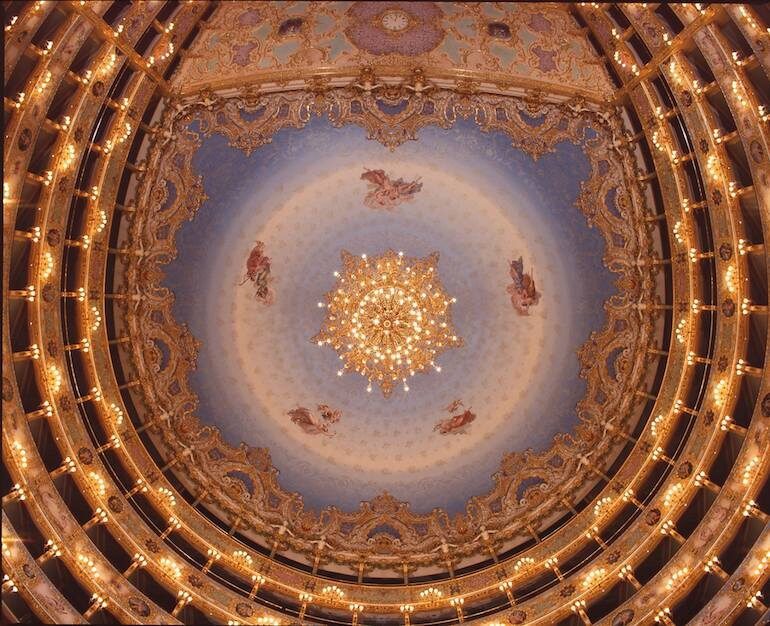8 top opera houses and historic theaters in Italy
From Verdi and Vivaldi to Tosca and La Traviata, Italy’s composers and operas are famous the world over. And where better to enjoy these masterpieces than in their home country? Italy’s theatres are as impressive as the pieces played in them – from Milan in the north to Palermo in the south, here’s a list of the best opera houses in Italy to enjoy classical, ballet or contemporary arts performances.
Rome: Teatro dell’Opera di Roma
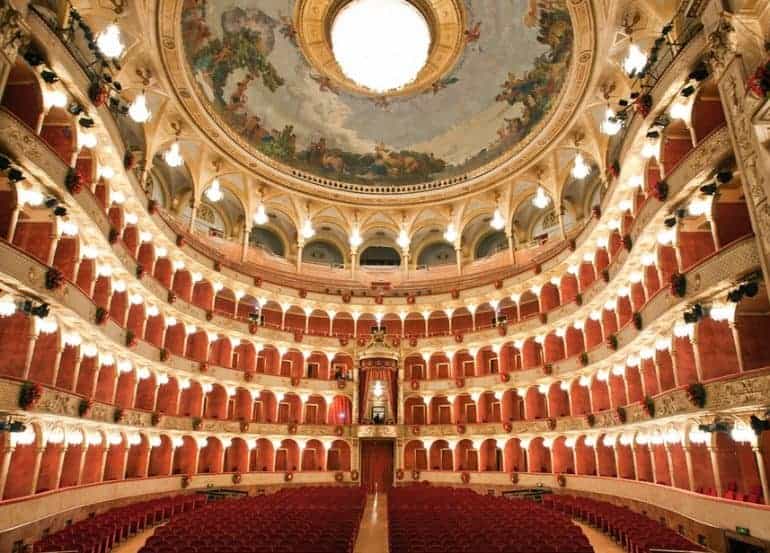
Italy’s capital city wouldn’t be complete without an opera house – the Teatro dell’Opera di Roma was originally opened in November 1880 as the 2,212 seat Costanzi Theatre, before several structural modifications and name changes turned it into the place we see today. It can seat up to 1600 people and its horseshoe shape allows for excellent acoustics. Opera and ballet performances are staged between September and June, while during the summer, the program takes place under the stars at the open-air Roman Terme di Caracalla.
Venice: La Fenice Opera House
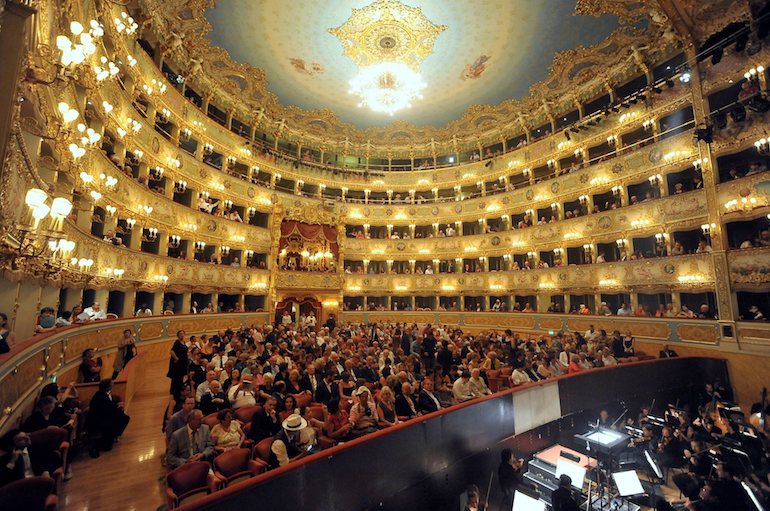
Situated in the San Marco neighbourhood, The Fenice Opera House is famous for, like its namesake the pheonix, rising from the ashes. Founded in 1792, it was inaugurated on 16th of May on the Ascension Day, which celebrates the Marriage of Venice with the sea. However, it has endured three major fires; the first in 1774, the second in 1836, and the third as a result of arson in 1996. Despite its setbacks, The Fenice remains one of the most famous and influential opera houses in Italy – in the 19th century, La Fenice became the site of many famous operatic premieres at which the works of several of the four major bel canto era composers – Rossini, Bellini, Donizetti, Verdi – were performed.
Naples: Teatro San Carlo

The Teatro di San Carlo is the oldest continuously active venue for public opera in the world, opening in 1737. Given its impressive size, structure and antiquity, it was the model for theatres that were later built in Europe. At the time of building, Neapolitan operas and artists were famous across Europe, so much so that Naples became the capital of European music and even foreign composers considered a performance at the San Carlo theatre as the goal of their career. Many shows including opera and ballet are still performed at Teatro San Carlo, with planning ongoing for a museum.
Palermo: Teatro Massimo

Palermo’s Teatro Massimo was dedicated to King Victor Emanuel II and opened in 1897, designed as an impressive cultural hub to celebrate the city’s ‘belle epoque’. The huge theatre is actually the biggest in Italy, and one of the largest of Europe – only the Opéra National de Paris and the K. K. Hof-Opernhaus in Vienna are larger. It is famous for its amazing acoustics and its use of ancient and classical Sicilian architecture, incorporating elements of the Greek temples at Selinunte and Agrigento. If you’re a movie fan, it may interest you to know that the final scenes of the film The Godfather Part III were filmed at the theatre!
Milan: La Scala Opera House
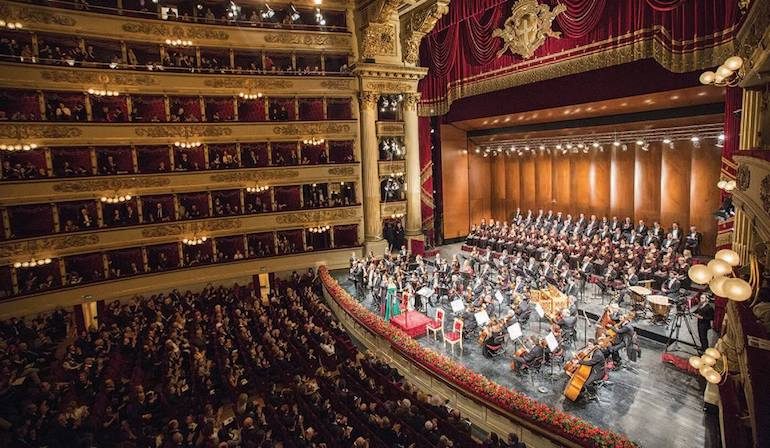
Arguable one of Italy’s most famous opera houses in modern times, Milan’s La Scala has played host to most of Italy’s greatest artists, and many famous singers from around the world. The theatre is home to La Scala Theatre Chorus, La Scala Theatre Ballet and La Scala Theatre Orchestra. It even had a particularly special relationship with Verdi – although, for several years, however, Verdi did not allow his work to be played here, as some of his music had been modified, or as he called it, “corrupted”, by the orchestra. It has a bookshop, bar, and history museum, as well as its own school for the performing arts.
Florence: Teatro del Maggio Musicale Fiorentino
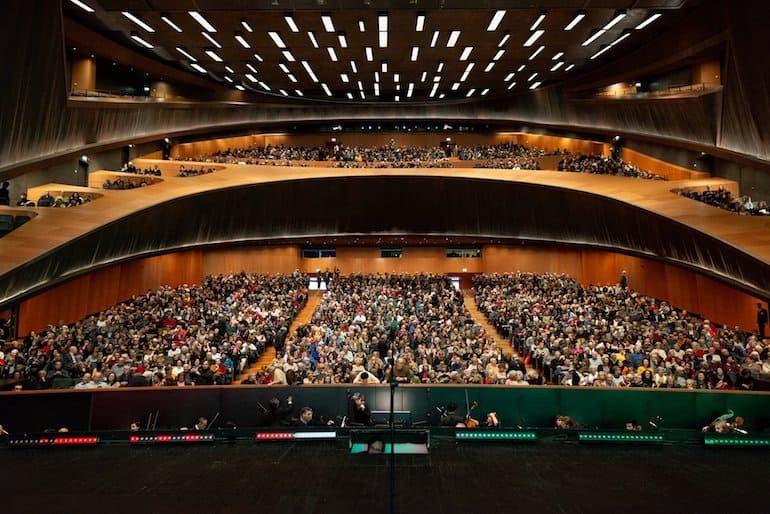
The Teatro del Maggio Musicale Fiorentino is completely different to the other theatres on the list, built in a contemporary style and officially opened in December 2011. The modern and multifunctional building is at odds with many of Florence’s famous architectural treasures, creating a wonderful juxtaposition with the rest of the city. The huge space – 360,000 square meters – was constructed in an elegant style, including terraces and enclosed spaces. The actual theatre, the Cavea, is a modern amphitheatre located on the roof, where 2,000 spectators can enjoy shows and open air concerts.
Torino: Teatro Regio

The Teatro Regio was initially inaugurated on 26 December 1740, but was then closed on royal order in 1792 – and it became a storage warehouse! With the French occupation of Turin during the Napoleonic War the theatre was renamed the Teatro Nazionale and finally, after Napoleon’s ascent to Emperor, renamed again as the Teatro Imperiale. Napoleon’s fall in 1814 saw the theatre return to its original name, the Regio. The theatre was then destroyed by fire in 1936, before reopening again in 1973. The rebuilt theatre keeps the original façade, but features striking contemporary interior design inside.
Bologna: Teatro Comunale

Bologna’s Teatro Comunale is actually one of Italy’s oldest theatres, with a rich history and sumptuous decor – but is often overlooked in favour of larger cities like Milan and Venice. Opened in 1763, it specialised in works by Giuseppe Verdi and, in 1871, hosted the Italian premiere of Wagner’s Lohengrin. It is a stunning example of 18th-century baroque architecture, and hosts around eight operas throughout its season, both traditional and with contemporary twists.


